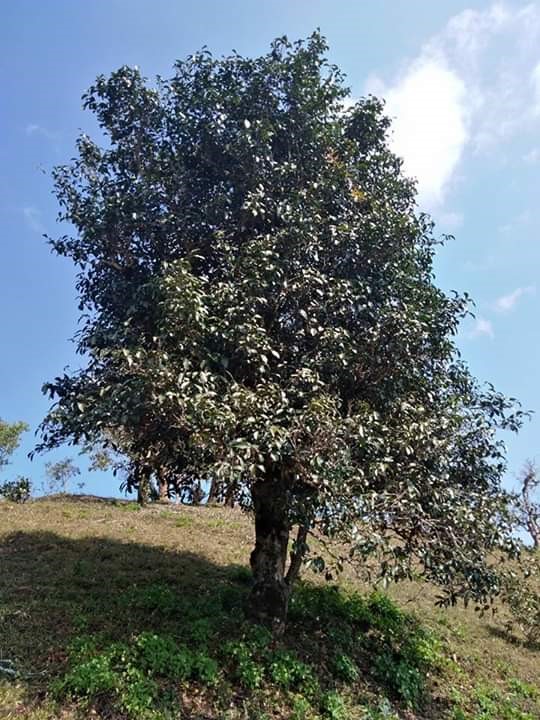Accession card
Description
Tea cultivation is one of the main rural livelihoods seen in Kyaukme Township, Northern Shan State. It can be seen in the many hills around the area. In Kyaukme Township, tea plants have been cultivated naturally for many years. Botanically speaking, tea belongs to the genus Camellia, species Thea and family Theaceae. Tea is a perennial crop. Most tea plants are not allowed to grow more than 3 feet high. This is because tea cultivators prefer to keep the plant low as it is difficult to pick tea leaves when the tree is tall.
The Ta’ang (Palaung people) who live in the hills of Kyaukme Township, have been tea growers for generations. For them, tea is highly regarded as it is a vital source of nourishment and main source of income. It is common for Ta’ang tea plantation owners maintain their tea plants for generations. Traditionally, every Ta’ang tea plantation has one special tea tree, known as myán tan hay in the Ruching Ta’ang language. This tea tree is the oldest tea tree in the plantation and some are even over 200 years-old. The leaves of these special ancient tea trees are not picked. Rather they are preserved with respect and care. As the Ta’ang view the tea tree as their benefactor, and give offerings to the old tea tree once every year.
During this ceremony, which occurs on the full moon day of March (Tabaung) the tea plantation owners, and family gather round their ancient tea tree to gild it in gold flakes (also known as gold leaves which are used as offerings at pagodas). Before they apply the gold flakes, they would rub the bark of the tea tree with bananas, to make the surface sticky. This makes it easier to apply to gold flakes. The full moon day of March (Tabaung) is even more significant as it marks the beginning of the season of Shwephi tea leaves.
A 90-year-old owner of six tea plantations described the offering as follows:
“We Palaung people work with tea and are grateful to it. It is an offering made with gratitude. The tea plant is our benefactor. Every year I offer to the oldest tree in my tea plantation", he said. Some bring material offerings such as rice, curry, incense sticks, candles, teapots. These material offerings show that the Ta’ang tea growers place the tea tree in high respect and regard, as it is their benefactor.
Project
Code
Date
University
Title
Medium
- Image



